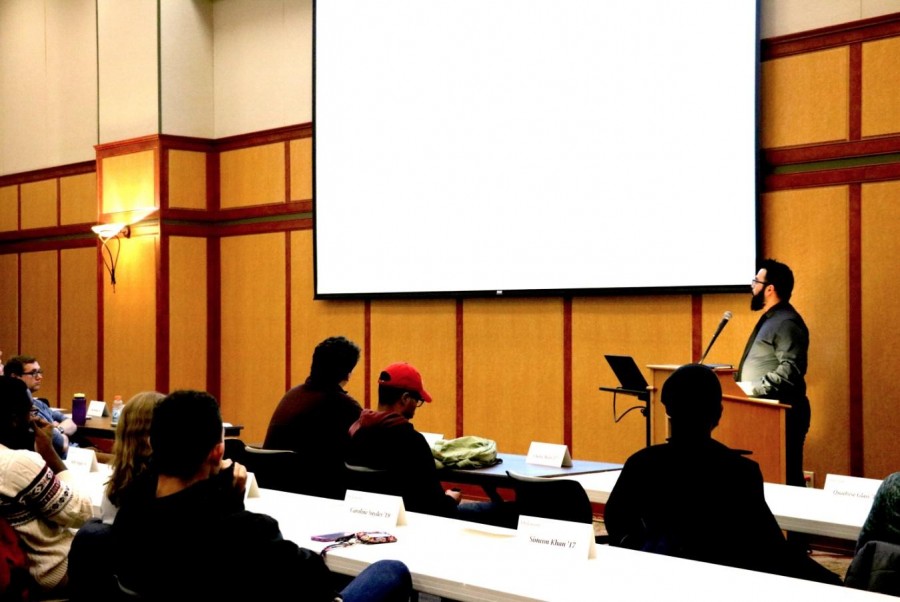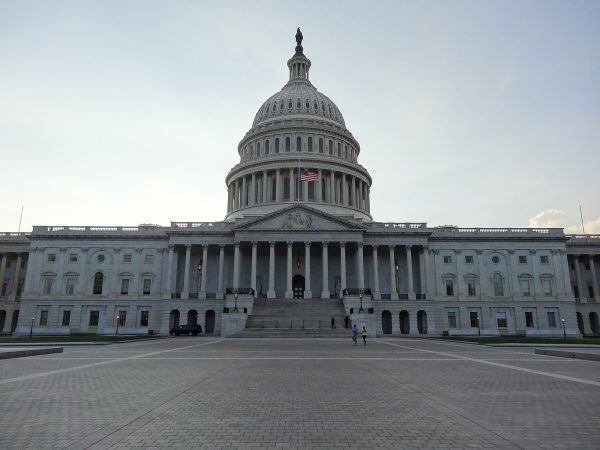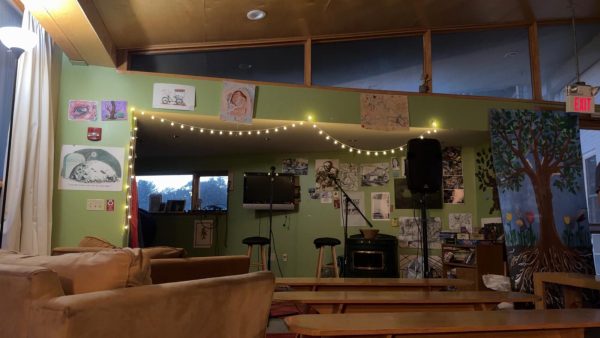Black, Latina Women Report Lowest Campus Comfort
Jason Rivera, director of Institutional Research, presented the results of the fall Student Engagement Survey at the Tuesday Student Senate meeting.
Data from the Dickinson Student Engagement Survey found that African-American and Latina women have the lowest levels of satisfaction regarding campus fit and climate, according to a presentation by Jason Rivera, director of Institutional Research, at the Feb. 9 Student Senate meeting.
Rivera said that this particular finding contrasted with data that suggested general satisfaction with the Dickinson experience.
“The only section in all of the data [collected] that drops below the agreement midpoint of the scale is the general comfort in climate and fit of Africa-American women,” reported Rivera. “[However], all [other] responses show students at or above the midpoint of the scale indicating students are generally satisfied with their Dickinson experience across all groups.”
Rivera stated that he did not find any one area of the survey results particularly surprising, and that the emotions felt towards Dickinson and the Dickinson experience by different racial groups was reflective of the rest of the country.
“If we did this survey across the US, I don’t think there would be many differences in terms of fit and climate…which makes the numbers somewhat unsurprising,” Rivera said. “However, as an institution we shouldn’t try to be like the rest of the world, we should strive to be better.”
Students perceived strength in Dickinson’s social settings, agreeing that it is easy to connect with similar people and to find supportive spaces to meet and discuss common experiences. Additionally, students across the board reported that they felt physically comfortable at Dickinson.
The most positive responses to the survey were regarding academics.
“Academics were great for us,” said Rivera. “[Students] feel comfortable, can handle the coursework and feel supported…that’s great news for us as an institution.”
Students of color reported wanting a greater focus on diversity and inclusion in academics, as well as desiring more campus policies that promote inclusion and an atmosphere of support. However, across the board, students agreed that the experience inside the classroom was positive and a real strength for Dickinson College.
This presentation before Senate was a “first-cut” look at the information gathered by the Engagement Survey. It will continue to be examined from other lenses besides a race/ethnicity viewpoint, according to Rivera.
“There are tons of different ways to look at [the survey] such as gender, sex and political views, and we’re just starting to dig in,” explained Rivera. “We started with the lens of race/ethnicity because that was the first purpose of the survey.”
Students who attended the Senate meeting thought that the survey results well-reflected their opinions about the atmosphere on campus.
“I don’t think that the numbers were very surprising based on those among the student body who’ve been speaking about diversity and inclusivity issues on campus,” expressed Shannon Nolan ’19. “I think that [these results] are a confirmation on what we need to work on as a community. Creating a community where all are able to feel safe, comfortable and like they belong should be a priority.”
“I am not really surprised at the results of the survey…I feel that although the overreaching data is accurate, the data collected from the ‘other’ racial category may not be as representative of its subjects’ sentiments as it could have been. The experiences of a white-passing individual will probably be different than the experiences of a racially ambiguous one,” explained Tom O’Donnell ’19. “I think a lot of progress can and will be made based on the interpretation of this data, but a good start would be not to lump together the potentially very different experiences of different groups of people simply because they are an other.”
The Office of Institutional Research, the President’s Office and Student Leadership and Campus Engagement (SLCE) began developing the survey in spring 2015, and it was completed by the start of the fall 2015 semester. The survey included 55 questions total in four main areas of campus life: student life, academics, Dickinson’s mission and demographics/diversity. 1,246 students responded, resulting in a 52.6 percent response rate.
“We had been planning to do this since spring of 2015…I don’t want people to think that we did the survey because of the events that had happened on campus [around the time of the survey’s release],” explained Rivera, referring to the diversity dialogues and the Why We Wear Black demonstrations.
In addition to the survey, the Office of Institutional Research conducted 23 diversity interviews to contribute data to the project. Additionally, focus groups will be conducted later in March to clarify and enhance the survey responses.
The demographic groups students could identify with in the survey were African American/Black, Asian, Caucasian/White, Latino/Hispanic, International or Other. The majority of the questions used a seven-point agreement scale response option, where one represented that the respondent “strongly disagreed” with the statement, and seven that they “strongly agree.”
Rivera stressed that “since we are dealing with averages and groupings of heterogeneous students, numbers do not imply all students of that group feel that way…in fact aggregated survey results mask the diversity within a given group because all scores are reduced down to one calculated average.”





